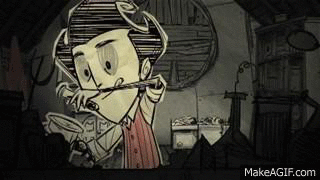In a remarkable—if likely controversial—feat, scientists announced today that they have created the first successful human-Pig hybrid. The project proves that human cells can be introduced into a non-human organism, survive, and even grow inside a host animal.

This biomedical hybrid advance has long been a dream and a quandary for scientists hoping to address a critical shortage of donor organs.

Every ten minutes, a person is added to the national waiting list for organ transplants. And every day, 22 people on that list die without the organ they need. What if, rather than relying on a generous donor, you could grow a custom organ inside an animal instead?

That’s now one step closer to reality, an international team of researchers led by the Salk Institute reports in the journal Cell. The team created what’s known scientifically as a chimera: an organism that contains cells from two different species, in this case, a Human-Pig hybrid.

In the past, human-animal chimeras have been beyond reach. Such experiments are currently ineligible for public funding in the United States (so far, the Salk team has relied on private donors for the chimera project). Public opinion, too, has hampered the creation of organisms that are part human, part animal.

But for lead study author Jun Wu of the Salk Institute, we need only look to mythical chimeras—like the human-bird hybrids we know as angels—for a different perspective.

The team then took stem cells from rats and injected them into pig blastocysts. This version failed—not surprisingly, since rats and pigs have dramatically different gestation times and evolutionary ancestors.

But pigs have a notable similarity to humans. Though they take less time to gestate, their organs look a lot like ours.

Not that these similarities made the task any easier. The team discovered that, in order to create a human-pig hybrid by introducing human cells into the pigs without killing them, they had to get the timing just right.
When those just-right human cells were injected into the pig embryos, the embryos survived. Then they were put into adult pigs, which carried the embryos for between three and four weeks before they were removed and analyzed.
In all, the team created 186 later-stage chimeric embryos that survived, says Wu, and “we estimate [each had] about one in 100,000 human cells.”
That’s a low percentage—and it could present a problem for the method in the long run, says Ke Cheng, a stem cell expert at the University of North Carolina at Chapel Hill and North Carolina State University.

The human tissue appears to slow the growth of the embryo, notes Cheng, and organs grown from such embryos as they develop now would likely be rejected by humans, since they would contain so much pig tissue.
The next big step, says Cheng, is to figure out whether it’s possible to increase the number of human cells the embryos can tolerate. The current method is a start, but it still isn’t clear if that hurdle can be overcome.

Belmonte agrees, noting that it could take years to use the process to create functioning human organs. The technique could be put to use much sooner as a way to study human embryo development and understand disease. And those real-time insights could be just as valuable as the ability to grow an organ.
Even at this early stage, Cheng calls the work a breakthrough: “There are other steps to take,” he concedes. “But it’s intriguing. Very intriguing.”














